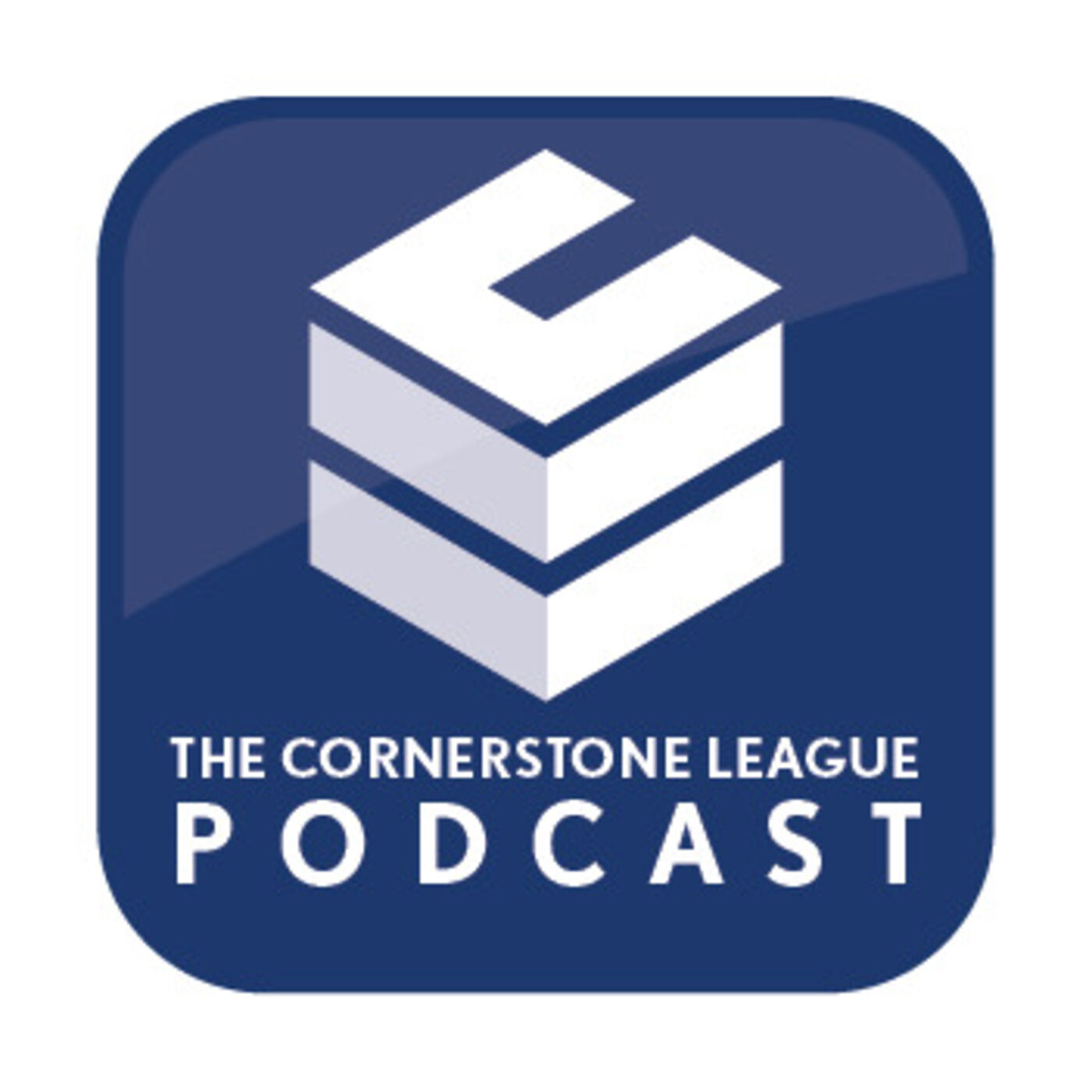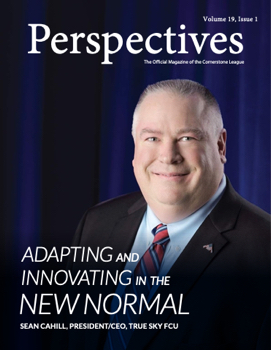

Staff training provides focus, insight on boundaries and bias
The Cornerstone League kicked off the year with an all-staff meeting held Jan. 4-5. President/CEO Caroline Willard opened the training, sharing some thoughts and accomplishments from 2020.
“If I could describe 2020 in one word, it would be poignant,” Willard said. “A poignant event touches your heart, leaving a handprint. Many events from 2020 were poignant and gave me enough pause to reflect on the handprints I felt. COVID-19 has killed more than 350,000 Americans, leaving indelible marks in our hearts and minds.”
She said that amid the challenges of 2020, the Cornerstone team managed to reinvent themselves, adjusting to the changing world around us and staying one step ahead of everyone else.
Willard also referenced Randy Pausch, who was terminally ill with pancreatic cancer when he gave a final lecture at Carnegie Mellon. Pausch, a professor and author of “The Last Lecture,” was intentional with what he said. He stated that “Experience is what you get when you didn’t get what you wanted.”
“We were tested in ways we never thought possible,” Willard said. “We didn’t get what we wanted in 2020, but we did get experience, and our experience taught us to add value. We innovated. We empathized. We reinvented ourselves. We took painful lessons and turned them into insights.”
Willard noted several accomplishments, including:
- Certification of new financial counselors through the Foundation Pandemic Response Strategy.
- Advocacy successfully turned Hike the Hill into Hike from Home.
- Vicky Salkeld, Arkansas Credit Union Association, worked with Governor Asa Hutchinson on the Arkansas Credit Unions: The Right Move. Right Now, series.
- Nate Webb, Oklahoma Credit Union Association, helped remove the provision from the National Defense Authorization Act related to bank leases on military bases.
- Gili Carter, Texas Credit Union Association, helped ensure the Texas Credit Union Department will maintain its semi-directed, semi-independent status for the next 12 years.
- Development did everything twice, redoing events virtually, including ELEVATE Credit Union Leaders—Cornerstone’s first all-virtual conference—and renegotiating contracts.
- Marketing and Communications launched a new brand and a new website.
- Resources introduced new products and new marketing for existing products.
Next, keynote speaker Neen James, sales and leadership coach and virtual speaker, discussed three basic principles: Attending to what is important, inhibiting things not on the list, and remembering where you are—measurement.
James asked employees to consider, “Do you feed your distraction or feed your focus?” She then advised staffers to use focus as fuel—for who and what matters most.
One sage tip gained from James’ presentation was to complete more complex tasks first—the things you dread or tend to put off. She also noted that it’s critical to put yourself first, caring for and protecting yourself.
One suggestion that resonated with team members was: Don’t send emails after hours. Instead, write the messages but don’t send them—use the “delay delivery” option in email.
James also explored employees’ personal productivity styles, determining if they were planners, crammers, or slammers. Planners put things on their calendars and diligently prepare and complete their tasks, while crammers wait until the last minute to get everything done. Slammers combine traits of planners and crammers. No one style works best, but it’s essential to know your style and those of your teammates.
The next session, “Saying ‘No’ with a Smile: Setting Expectations and Boundaries While Serving Others,” was led by Rachel Sheerin, international keynote speaker, and virtual emcee. According to Sheerin, the only way to do great work is to love what you do, who you do it with, who you do it for.
She asked a few questions to engage employees, including whether individually, staffers clearly set boundaries and expectations. She also asked the team to list one communication skill they’d like to improve, with listening being a top answer.
Sheerin stressed that the return on investment is equal to the rate of involvement. She also asked staffers to find out what their personal productivity style was: Fast or slow. Characteristics of fast-paced people include choosing a phone call over an email, sharing opinions and acknowledging others, and asking why something is happening and if they did something wrong. On the other hand, slow-paced individuals tend to write longer emails with lots of details. They seek feedback and are concerned with how other people feel.
Sheerin also presented the last session of the day on “Growing Greater—How to Find and Attract Members in a Fast-Paced Digital World.”
To help boost confidence, Sheerin offered tips like knowing “why” and the statistics to back it up, such as the number of people involved, time involved, and experiences. She also suggested showcasing value with conviction and accessibility, such as the company Bombas offering a free pair of socks to the homeless with every pair purchased.
She discussed confusion, describing it as too much information, resulting in feeling overwhelmed. One way to overcome it is to set expectations for members, teams/organizations, and ourselves. As part of this, timeframes and hard stop times are important. To provide exceptional service, employees must be 100% focused when interacting with members.
In addition, Sheerin shared with employees what success with others looks like. She explained that we are here to mentor, not to micromanage. She also highlighted the ability to change, including ourselves, and she encouraged staff to brag about their colleagues.
Sheerin also noted the elements of success for us as individuals. This includes honesty and self-reflection. It also encompasses gratitude, forgiveness, hope, and a focus on what we want more of.
Team members were also asked to think about how they want to feel today and what actions to take to feel that way. Additionally, James encouraged the group to consider what they want to stop doing if it doesn’t serve them.
On Tuesday, employees participated in the webinar “Embracing the Unknown-Positive Stress Management for Work and Life” with Sheerin. The session started with a discussion on how remembering all the things you have overcome helps build confidence. Sheerin invited staffers to think about their worst day ever, giving an example of the day her dad died and stressing that no workday would ever be that hard. During difficult times, you find your strengths.
Sheerin then explained that happy people give more and that happiness is a choice—like a battery that charges or drains. She suggested reframing negative thoughts, and when you feel helpless, give more.
The training wrapped up with a session on “Breaking Bias” with Tony Chatman, speaker, author, and virtual presenter. Chatman walked employees through systems one and two in the brain. System one is intuitive and includes the subconscious mind, while system two is the rational mind.
Chatman explained that our fight or flight tendencies happen without intent—system one—and are part of our unconscious bias. The algorithm in our brains is preprogrammed and is similar to a recipe. He also stressed that our subconscious brain can go against our beliefs and morals. He further pointed out that fair, just, and moral decisions cannot be made using system one or our subconscious. According to Chatman, you need to have conversations and speak truthfully to make changes.
Chatman outlined the eight dimensions of impressions, which are made up of religion, race, sexuality, nationality, class, ability, gender, and age—the strongest bias in the workplace and in entertainment in the U.S.
Through exercises and conversations, Chatman showed that sources of bias include the media, your upbringing, parents, environment, and experiences. Biases are activated by stress, time constraints, multitasking, and the need for closure.
So how do you fix biases? Through awareness, exposure/reprogramming, and accountability. It’s important to establish a safe environment. As part of this, it’s essential to see the difference between policies and procedures and how they are executed. There’s a danger in trusting your gut (your subconscious). According to Chatman, research and data serve as better judges.
Subscribe
Sign up to the receive the weekly Leaguer email. Existing subscribers can manage their subscription.

